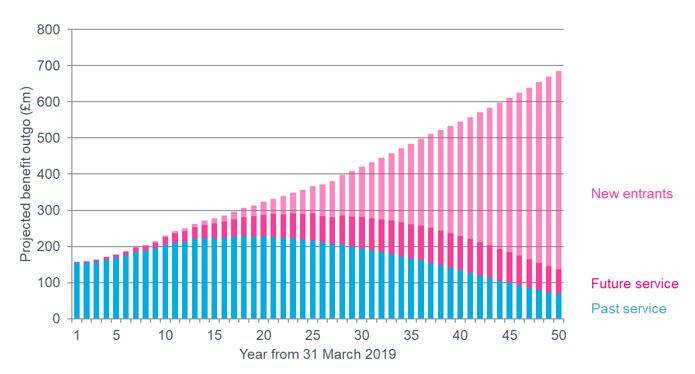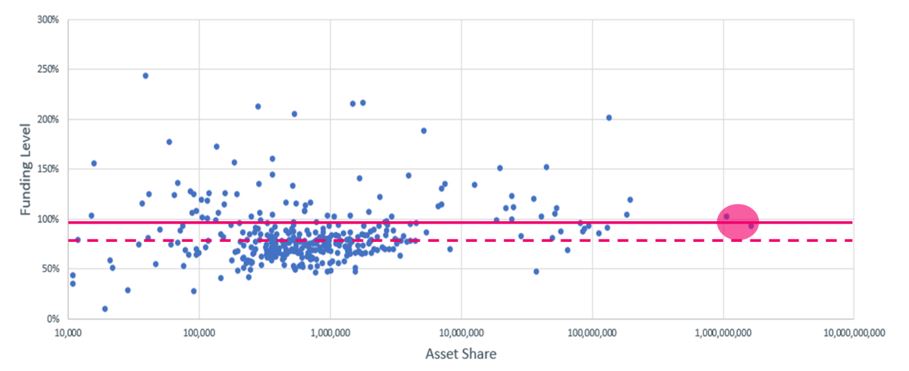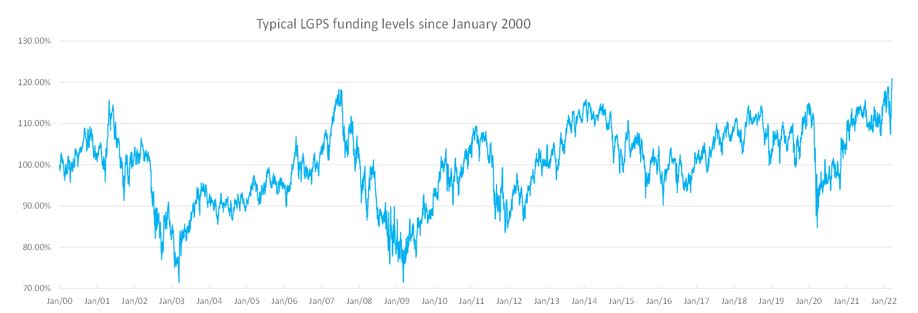The Funding Level: a healthy obsession?
06 Apr 2022
There’s currently a healthy buzz in the LGPS around the funding level as we approach the 2022 valuations. This is triggering lots of debates around: “what should we do to protect the funding level?”; “what should we do with the surplus?”; “what funding level should we aim for now; 110%, 120%?”.
It’s certainly nice not to be in the Daily Mail – the LGPS hasn’t seen a pensions black hole article for a while now. And it’s certainly better in this territory, than the deficit territory that became the norm a decade or more ago. I’ve seen Pension Committees feel pride in the achievement of full funding. On occasion, I’ve even accepted congratulations or thanks for my role in helping funds get to this point.
I do this with slight unease. I don’t think we’re in “job done” territory when it comes to funding for the LGPS and I know funding level is an imperfect metric.
An often misquoted line – “money is the root of all evil” – is borne from the bible verse1 “the love of money is the root of all evil”. And similarly, I’m not saying the funding level is evil, but maybe our collective obsession with funding level is ill-advised.
I see our obsession with funding level causing three particular problems on the journey to paying members’ benefits:
- Funding level is about what’s behind us or what’s already happened. Focussing on it too much is like driving through the rear-view mirror.
- We get excited when we reach 100% funding, but the journey isn’t over yet. We attach more meaning to that number than really exists.
- You manage what you monitor – and too much focus on funding level leads us into reacting to the short-term rather than focussing on a long-term plan and steady progress.
Driving through the rear-view mirror
This chart shows the payments that a typical LGPS fund will make in the next 50 years. The benefits earned up to the valuation date, which is all the funding level reflects, are shown in blue. The pink elements are in respect of benefits that will be earned in the future.
For a council, the blue bit makes up about 35% of the payments over the next 50 years. For an academy, this falls to 18%. So, we can see that funding level isn’t really a good guide to what’s on the road ahead of us. And even less so for telling us what may happen to an employer’s contribution rate.
Are we nearly there yet?
The typical refrain heard on any car journey equally applies to LGPS funding - everyone wants to know if the fund has reached 100% funding. But it’s not our destination.
Firstly, the LGPS is a multi-employer scheme and 100% funding at fund level does not translate to 100% funding for everyone. There’s variability within the employer group as shown by the blue dots below, and the whole fund results are dominated by the biggest employers, typically councils (in the pink circle).
Secondly, 100% funding is transitory. In an open scheme like the LGPS we can’t lock it in, it's not our final destination. Instead, it should be thought of as a sign that we’re making good progress on the journey so far, but there may still be traffic jams or delays up the road at some point.
Get the map out…again
When planning a long car journey, I do all the prep, work out the best route (usually the one that goes via my favourite service station) and include a bit of leeway for unexpected delays. But then I see a traffic jam, get frustrated and start replanning and darting down B roads to get ahead of other drivers. In the end, this causes angst for everyone else in the car and wastes a lot of time and effort for very little, or sometimes no, gain. What I should have done is remembered I’d allowed for some leeway and use this ‘prudence margin’ to let me wait out the traffic conditions.
It’s a similar story in the LGPS. We readily say that we invest in return seeking assets because the LGPS is a long-term investor - we can reap that risk premium and weather market cycles. But then we find short-term asset and funding level volatility uncomfortable and start talking about equity protection, protecting the funding level, setting up deficit working groups and asking worriedly what to do with our surplus.
We need to remember we have prudence margins built into funding plans and sometimes it’s OK to let them reduce, and sometimes let them increase.
The new obsession – contribution rates
As we approach this valuation, we do have an opportunity to reframe the funding question.
We’ve always said stability of contributions is important, but historically, our contribution rates were too low to weather tough times.
To wring every last drop out of the driving analogy, our contributions are like the speed of the car. And for most funds, the average speed wasn’t high enough to allow for the inevitable traffic jams on the road ahead. As soon as we hit a traffic jam, such as a fall in markets, we fell behind where we needed to be and we had to speed up by increasing contributions or plotting a totally different route and changing investment strategy.
At this valuation, I think we have the opportunity to ask ourselves: can we break that cycle and set a long-term stable contribution rate with a fixed range around it? A rate that we intend to pay over the long-term, through the funding level volatility, with only small adjustments as we ride through market cycles or reflect changes in membership.
If you want any more information about the 2022 valuation, including webinar replays, thought pieces or our valuation toolkit, please visit our 2022 LGPS valuation hub.
1 1 Timothy 6 v10






0 comments on this post